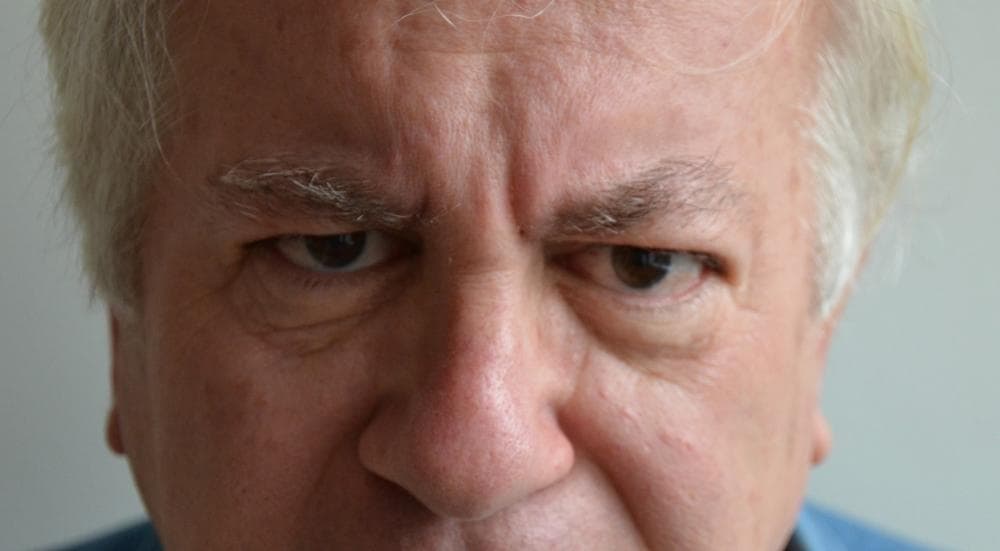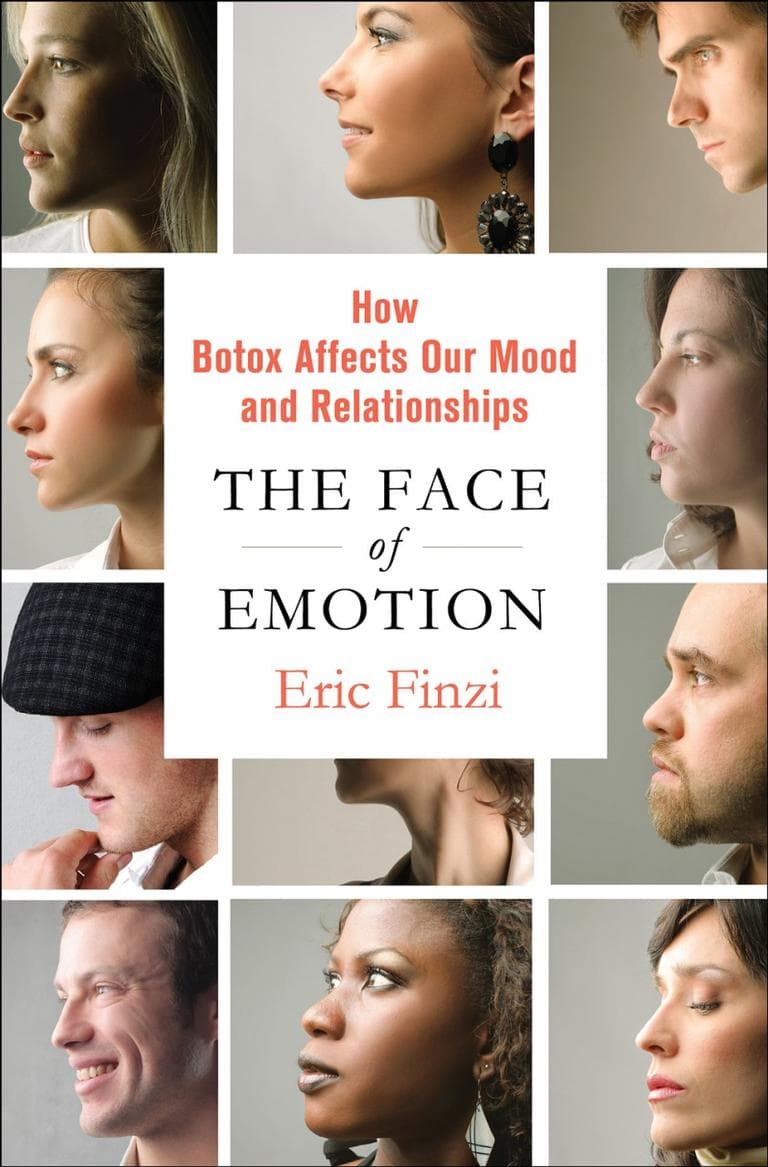Advertisement
Could Botox Shots Help Depression?
Resume
Our facial expressions reflect how we feel. But for many years, researchers have theorized that the opposite can also be true - that making a particular facial expression can affect mood.
That's the principle at play in dermatologist Eric Finzi's new book "Face of Emotion: How Botox Affects Our Moods and Relationships" (excerpt below).
Through some preliminary studies, Finzi and other researchers have found that that injecting Botox into muscles that are involved in frowning can help to elevate mood.
Finzi suggests that Botox treatments might help those suffering from severe depression.
"There are millions of people who are depressed, who've tried anti-depressants and talk therapy," Finzi told Here & Now's Robin Young. "Some of them may have even tried shock therapy. And for those people, if it helps them, this would be great to have one more tool in the little toolkit box of the physician to help them."
- Would you consider Botox if you were depressed? Join the debate on Facebook.
____Book Excerpt: Face of Emotion
By: Eric Finzi____
Chapter 1: A poison to some, a miracle to others
What is now proved was once only imagined.
—William Blake
We are bombarded on a daily basis with flawless images of women and men. Whether these images are real or enhanced digitally and/or surgically, the young movie stars and models become idols whose looks and actions are emulated by millions. From style to parenting to cosmetic procedures, these demigods provide an elusive standard to which many aspire.
The desire to look like these icons goes hand in hand with the wish to prevent or reverse the ravages of aging, a part of human behavior for as long as we have had records. For millennia we have searched for simple, quick, and effective ways of treating aging. Today, Botox has become the most popular cosmetic procedure in the world. What attributes of Botox account for its immense popularity?
Perhaps it is because Botox injections are quick, affordable (as cosmetic procedures go), almost painless, and effective at reducing lines and wrinkles. In addition, treatment with Botox is non-invasive, is safe, causes minimal bruising, and requires only a short recovery period. All of these features add up to a drug used by millions.
How surprising then is the vitriolic reaction that the discussion of Botox can elicit! What is it about this molecule that brings out big partisan guns at the dinner table? How many other small proteins have such strong emotions attached to them?

What Is Botox?
Botox is a trademarked name for one type of chemical whose scientific name is botulinum toxin A. It is derived from a bacterium that lives best under conditions where there is no oxygen. Before there were safety standards for the canning of food, it was not rare for people to die from the ingestion of this bacteria and its toxin after eating a can of improperly prepared food. Botulinum toxin is the most powerful poison made by nature. A single gram of the purified toxin, widely dispersed and inhaled, could kill a million people.
How Botox Was Discovered
In 1822, Justinus Kerner published his insights on the clinical course of botulism, including physical findings such as lack of tear fluid and muscle paralysis. Amazingly enough, he also speculated on the potential therapeutic value of botulinum toxin, including its possible use to prevent abnormal muscle movements. Subsequently, the bacterium responsible for botulism was identified and cultured. Long before any of the current uses, research was focused on purifying the toxin for use in warfare. Fortunately, botulinum toxin did not prove to be an easily applied weapon; it was more suited as a medicine. It wasn’t until 1973, when Dr. Alan Scott first published his work on the treatment of strabismus (a disorder in which the eyes are not properly aligned with one another, usually resulting from a lack of coordination from muscles controlling eye movements) in monkeys with botulinum toxin, that the possibilities for botulinum toxin being used medically began to be explored.
Botulinum toxin’s cosmetic uses were discovered when Jean Carruthers, a Canadian ophthalmologist, was treating a patient in 1987 for a rare eye disorder known as blepharospasm that causes excessive blinking of the eyes and, in some, causes the eyelids to slam shut. Dr. Carruthers treated the woman with botulinum toxin, then a largely unknown substance. Application of botulinum toxin in small amounts worked well and stopped Dr. Carruthers’s patient’s debilitating eye disorder. But, even with no symptoms, the patient kept coming back, telling her doctor that each time she received a botulinum toxin injection, the wrinkles between her brows seemed to disappear, giving her a relaxed, untroubled expression.
Dr. Carruthers’s husband, Alastair, a dermatologist, found the story of the blepharospasm patient intriguing and began to explore how botulinum toxin could be used to enhance a person’s appearance. Alastair and Jean’s seminal research helped bring botulinum toxin into wide usage. Since then, millions have been treated with botulinum toxin for both cosmetic and non-cosmetic reasons.
The toxin prevents neurons from releasing the chemical that allows us to use our muscles. A tiny amount prevents muscles from performing their normal duties, such as swallowing and breathing. If you ingest enough of the toxin, it paralyzes all the muscles in your body, including the ones necessary for moving the diaphragm, which is a required part of breathing. Unless you are hooked up to a breathing machine, you do not survive long after ingesting that bad can of food. In the 1800s, eating a contaminated sausage would cause a slow and agonizing death as one’s whole body became progressively weaker until, finally, one was unable to breathe. But injected locally, in tiny doses, the toxin paralyzes only a small area of muscle. The effect is temporary, lasting 3 to 12 months depending on where it is injected. In the face it is usually injected into the upper third to diminish forehead lines, crow’s feet, and frowning between the eyebrows. Any lines on the face that are caused by underlying facial muscle movement are helped by Botox. The ability to smile with your mouth is not affected, and you look younger from the softening of lines and creases and the absence of a scowl between your eyebrows.
It sounds pretty nasty that you are injecting a poison—until you realize that almost all drugs, in the wrong dose, are poisons. What really matters is the difference between the effective and lethal doses of the drug. The bigger the difference, the safer the drug. Conversely, if there is not much distinction between the dangerous and the effective dose, one must be very careful. Let us take the example of the drug acetaminophen, known most commonly by its brand name Tylenol. It is a safe drug when used properly, as evidenced by the millions of children who take it every year (who would give a poison to their child?). But what happens if you ingest ten times as many Tylenol as recommended? This is one of the more common reasons that young people require liver transplantation.
Or how about trying to push away some anxiety with a few Valium and a couple of drinks to further numb the pain? Another very bad idea. This sort of combination has accidently killed quite a few in Hollywood because the ratio between the lethal dose and the effective dose of anti-anxiety pills is not very high to begin with and is lowered significantly when combined with alcohol. Quite a few drugs have dangerous interactions with other medicines that can alter their safety profile. Botox is not among them. The difference between effective and lethal doses of botulinum toxin is huge.
If someone accidentally injected 20 times as much botulinum toxin as needed into your face, it would not kill you (although your face would look frozen). The fact that botulinum toxin is such a powerful and specific poison actually makes it a relatively safer drug. If you take 20 times the proper dose of aspirin, the pain in your shoulder may go away only to be replaced by more severe stomach pain caused by a bleeding ulcer, one of the unfortunate side effects of aspirin. In order for aspirin to help your shoulder, it needs to enter your bloodstream. But for it to get there, you need to eat it. And 20 pills can make quite a hole in your stomach.
Excerpted from the book THE FACE OF EMOTION by Eric Finzi, MD. Copyright © 2013 by Eric Finzi, MD, and reprinted with permission of Palgrave Macmillan, a division of Macmillan Publishers Ltd.
Guest:
- Eric Finzi, dermatologist and author or "Face of Emotion." He's also president of two dermatology practices in Maryland.
This segment aired on March 15, 2013.
